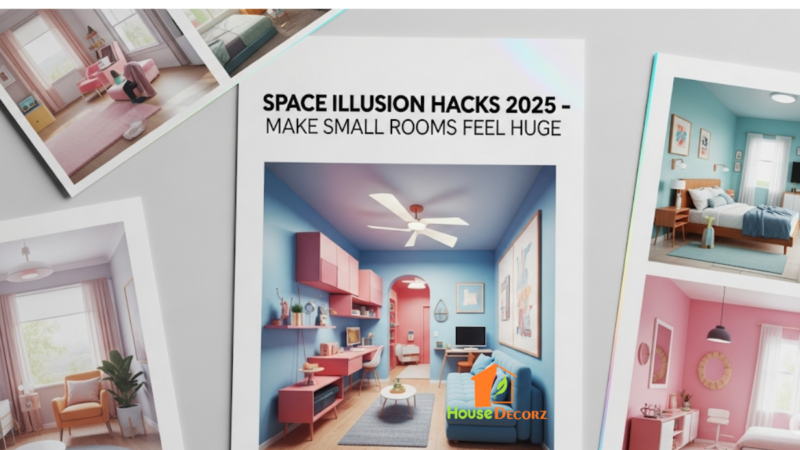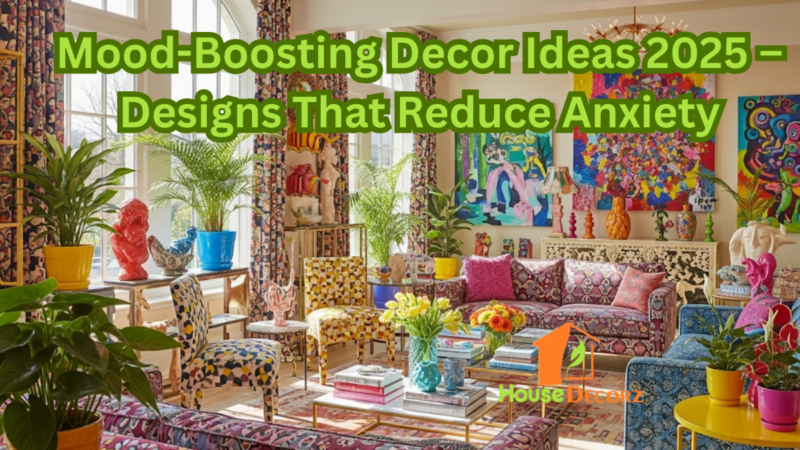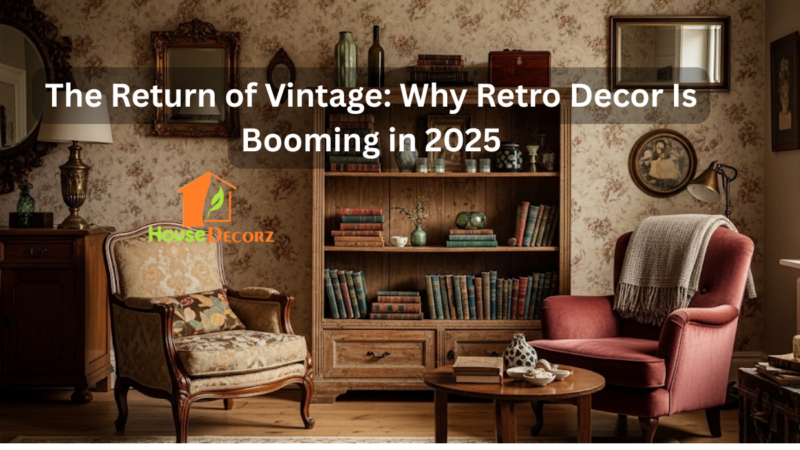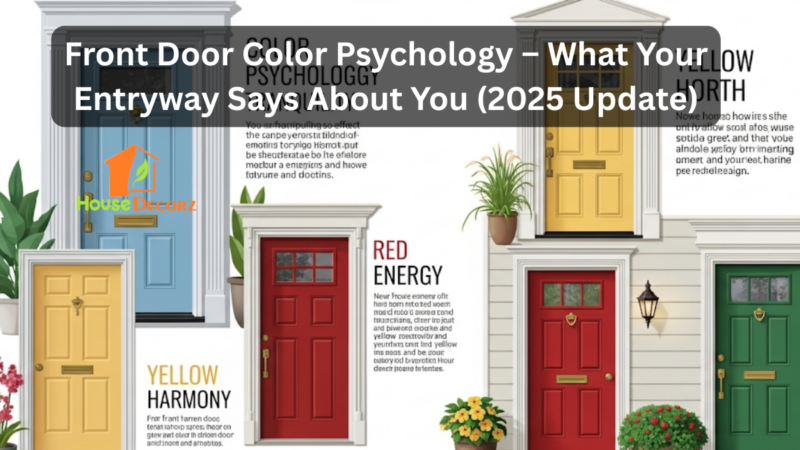Sustainable Home Decor 2025: Eco-Friendly Furniture & Green Living Tips
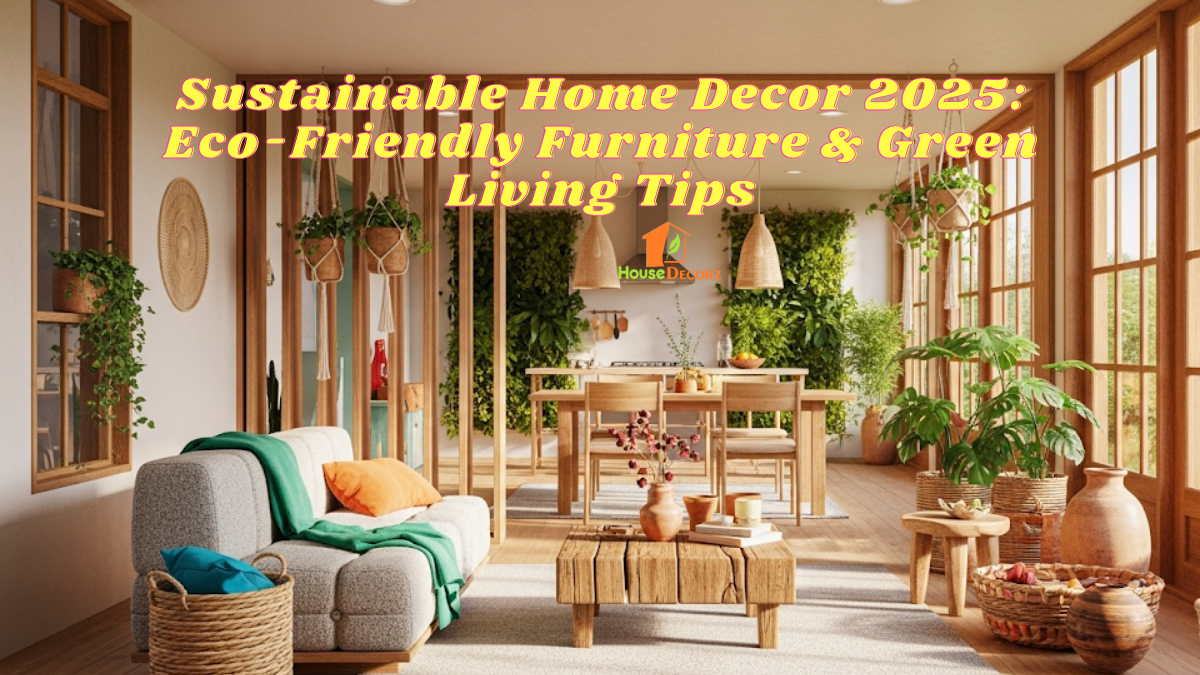
With climate concerns and ethical consumerism at the forefront, Sustainable Home Decor 2025 is redefining interior design through eco-friendly furniture, responsible materials, and mindful consumption.
More homeowners are transitioning to green living by choosing sustainable materials, investing in energy-efficient appliances, and repurposing existing decor rather than purchasing new items.
Whether you’re planning a full renovation or looking to incorporate small, impactful changes, the latest sustainable trends will help create an elegant and environmentally responsible home.
Why Sustainable Home Decor Matters
1. Lower Environmental Impact
Eco-friendly furniture and home decor reduce reliance on virgin materials, cutting down carbon emissions associated with mass production.
2. Healthier Indoor Spaces
Many conventional furnishings contain harmful chemicals, such as formaldehyde and VOCs. Choosing sustainable home decor improves indoor air quality and reduces toxins.
3. Cost-Effective Over Time
Though some sustainable choices may have a higher initial price, their durability and energy-efficient benefits save homeowners money in the long run.
4. Ethical Consumerism
Supporting sustainable brands, fair-trade artisans, and upcycled decor ensures responsible sourcing and helps prevent exploitative manufacturing practices.
5. Unique & Personalized Interiors
Eco-friendly furniture often features custom designs, reclaimed materials, and handcrafted elements, adding character to your home.
Eco-Friendly Furniture Trends in 2025
1. Reclaimed Wood & Bamboo Furniture
One of the most popular choices for sustainable furniture, reclaimed wood minimizes deforestation while adding rustic charm. Bamboo is another top pick, valued for its renewability, strength, and elegant appearance.
2. Upcycled & Repurposed Furniture
Creative upcycling breathes new life into old furniture pieces. DIY transformations, second-hand purchases, and artisan restorations help reduce waste while adding a unique touch.
3. Low-VOC Paints & Finishes
Traditional paints release volatile organic compounds (VOCs) that contribute to indoor air pollution. Opting for low-VOC, non-toxic finishes enhances health and sustainability.
4. AI-Integrated Smart Furniture
2025 introduces more automated, energy-efficient furniture, such as solar-powered lighting systems, temperature-regulating textiles, and smart appliances designed to minimize energy waste.
5. Minimalist Multi-Functional Designs
Sustainable furniture embraces practicality and versatility. Foldable tables, modular seating, and adjustable shelving help maximize space while reducing excess consumption.
Green Living Tips for a Sustainable Home
1. Choose Organic & Natural Textiles
Organic materials such as linen, hemp, and cotton reduce reliance on synthetic fabrics, creating a toxin-free environment.
2. Incorporate Indoor Plants for Air Purification
Plants like snake plants, peace lilies, and pothos help filter out harmful toxins while adding a fresh, natural vibe to indoor spaces.
3. Reduce Plastic in Home Decor
Swap plastic-based furniture and decor for recycled metal, glass, or reclaimed wood to cut down on waste.
4. Invest in Energy-Efficient Appliances
Upgrade to smart thermostats, LED lighting, and water-saving fixtures to lower energy bills and environmental impact.
5. Buy Locally & Support Ethical Craftsmanship
Choosing locally made furniture and decor minimizes carbon emissions from transportation while supporting artisans and fair-trade businesses.
Recommendation
Transform Your Balcony Into a Green Retreat – Easy DIY Ideas
Balcony Decoration Ideas for Urban Indian Homes
Stylish Balcony Ceiling Design Ideas for Modern Homes
Stylish Balcony Decor Ideas for Indian Apartments
Statement Ceilings Are the Bold New Home Trend of 2025 – Design Ideas You’ll Love
FAQs About Sustainable Home Decor 2025
1. What are the best eco-friendly furniture materials?
Reclaimed wood, bamboo, cork, recycled metal, and organic textiles are some of the most sustainable materials for furniture.
2. How can I make my home more energy-efficient?
Using LED lights, smart thermostats, solar-powered appliances, and water-saving fixtures can significantly reduce energy consumption.
3. Is sustainable home decor expensive?
Not necessarily! Many budget-friendly options, such as thrifted furniture, DIY restorations, and second-hand pieces, offer affordable ways to decorate sustainably.
4. How do I find ethical home decor brands?
Look for brands with certifications like Fair Trade, FSC (Forest Stewardship Council), GreenGuard, or B Corp, which ensure responsible sourcing and ethical production.
5. Can I create a sustainable home without major renovations?
Yes! Small changes like switching to eco-friendly textiles, repurposing old furniture, and reducing energy usage make a big impact.
Conclusion
The Sustainable Home Decor 2025 movement is transforming interiors with eco-friendly furniture and green living practices.
From repurposed materials and smart technology to mindful consumption, sustainable decor enhances both aesthetics and environmental responsibility.
Whether through energy-efficient upgrades or ethical furniture choices, these trends help homeowners create a stylish, functional space that supports a healthier planet.

